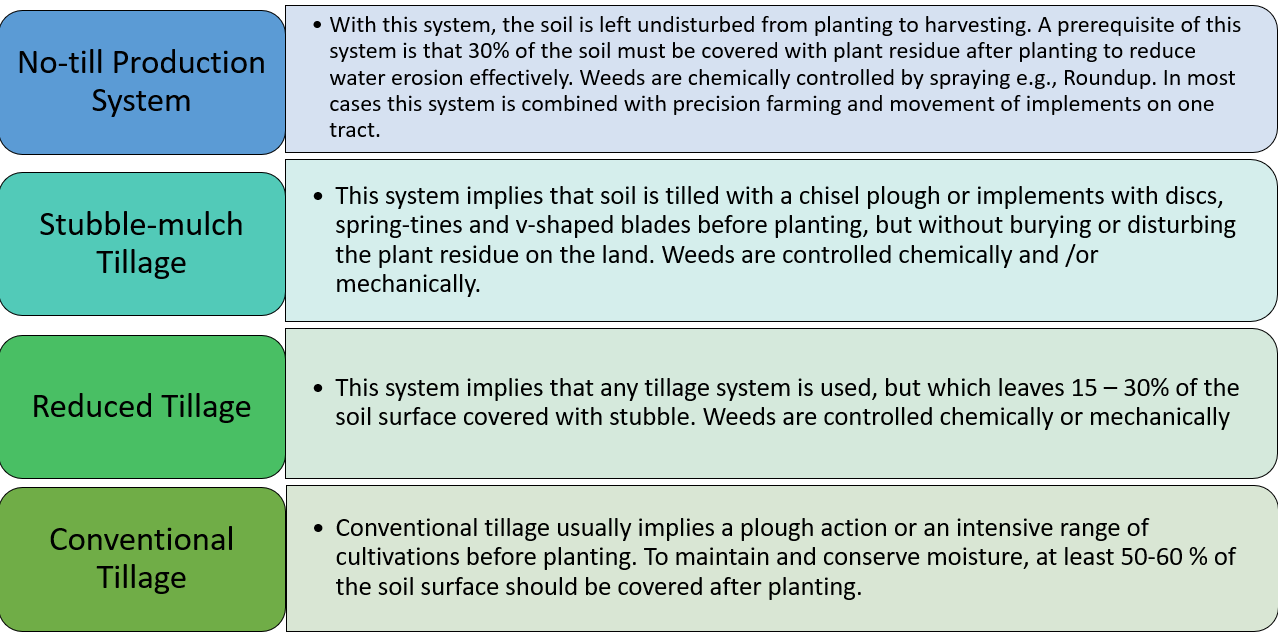The farmer or manager must know his soil to be successful in crop production. To be able to know the soil the farmer can send soil samples for analysis to determine the following:
- Soil type
- Nutrient status of the soil
- To determine the texture of the soil
- Recommendations for the specific crop to be planted
The farmer or the manager must be able to plan the cultivation program for the specific crop. Different tillage programs can be used in crop production, depending on the soil type, soil fertility and the crop to be produced.
Production Systems

|
Major advantages and disadvantages of different tillage systems |
||
|
Tillage system |
Advantage |
Disadvantage |
|
No-till |
Lowest fuel consumption Quicker adaptation to optimum planting date Lower machinery cost Best control of wind and water erosion |
A higher application of herbicide and intensive herbicide management is necessary Requires: Higher management inputs Specialised or adapted implements More expensive equipment Possible compaction of soil and accumulation of nutrients in topsoil Earlier occurrence of leaf diseases Possible over-population of insects |
|
Stubble mulching |
Fuel-saving compared to conventional tillage Good control/ better management of: Wind and water erosion Soil compaction Weed control |
Soil preparation dependant on spring rains Greater possibility of leave diseases |
|
Reduced tillage |
Greater fuel economy than conventional tillage Control of : Wind erosion Insect population Accumulation of nutrients is not a problem |
Poor management of soil erosion Need better weed management |
|
Conventional tillage |
Good weed and insect control Lowest management input |
Highest: Fuel consumption Machinery costs Waiting period for suitable soil water No control of water and soil erosion |
When using any of these tillage systems, it is very important to ensure that a compacted layer, that may impair plant growth, does not occur in the effective root zone of the soil. If such a confined layer is detected, it should be broken by using a ripper implement to ensure better drainage, conservation and utilisation of water.
